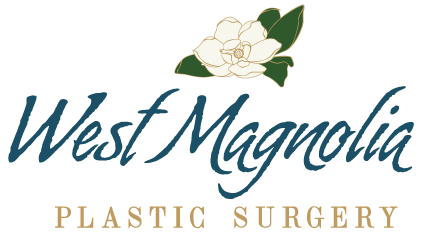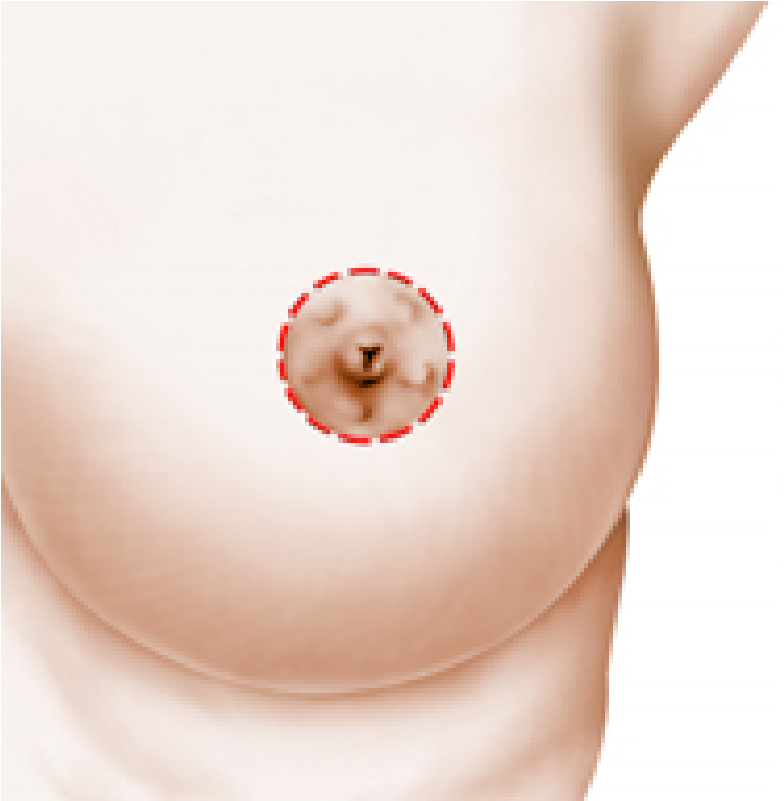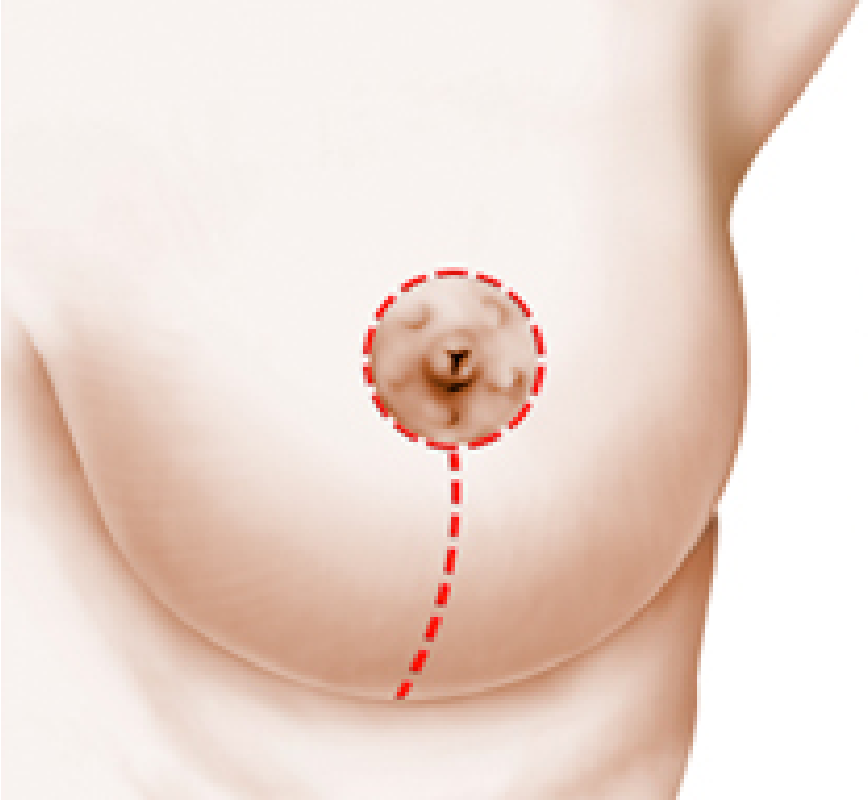Breast Lift
What Is a Breast Lift (Mastopexy)?
Breast reduction and breast lift are technically very similar procedures with a breast lift indicating a less significant removal of breast volume. Patients whose breasts have become deflated (known as breast ptosis) are generally candidates for this procedure. It involves repositioning the nipple-areola complex to a more desired, elevated location on the breast and reshaping the breast tissue that remains after removal of excess to a perkier, more elevated configuration. A breast lift is often combined with placement of a breast implant if the patient’s breasts are sufficiently deflated that a lift alone would not result in adequate and pleasing breast shape. This decision and recommendation is made at the initial consultation based on the patient’s interest and desires.
Where Will My Incisions be?
Concentric:
This technique is for patients with a very modest need for nipple repositioning, estimated at 1-2 centimeters. An incision is made around the areola, which has often been reduced to some degree from the native areolar dimension. A skin incision is made based on the desired final areolar position. The final scar is around the perimeter of the areola.
Vertical "Lollipop":
This technique is indicated for patients with a more significant need for nipple -areolar elevation and correction of breast ptosis (deflation). The incisions are around the areola and from the border of the areola at 6 o’clock downwards to the inframammary fold.
Inverted T (Wise Pattern, "Anchor"):
The most significant and effective technique to reshape the breast and elevate the nipple-areola to the desired final location. Incisions are around the areola, from the areola to the fold and along the fold. The final length of the incision in the fold is related to the degree of deflation of the breast but generally is relatively short. Patients with this type of mastopexy generally have a drain placed during surgery that is removed once volume is sufficiently low to remove.
How long will surgery be?
A breast lift without any related procedures generally takes between 1 and 2 and a half hours, depending on technique.
What kind of Anesthesia will I have?
General anesthesia is used for breast lift because it is safe and very well controlled. West Magnolia Surgery Center, on site at West Magnolia Plastic Surgery, is fully accredited by the AAAHC. Local anesthesia in injected into the incisions once the patient is under anesthesia for enhanced postoperative comfort.
What is recovery like?
Patients leave the surgery center with a surgical bra in place to secure their dressings. The patient’ s caretaker will have been educated on how to manage and record the drainage if a drain is placed and instructions for incision care reviewed. Most patients have very little soreness after surgery and if any it is along the incisions. All patients are given prescriptions for pain medication and instructions on how to use it at their preoperative appointment. If drains are present, once they are removed, patients can take a ‘real’ shower. By that time incisions are generally healed sufficiently to proceed to silicone scar therapy.
What are the risks?
The risks of breast lift include bleeding, infection, asymmetry, loss of nipple blood supply and loss of nipple sensation. The most common complication I see is a small separation of the incision where multiple points come together: along the areola and the vertical scar and the vertical scar and the scar in the inframammary fold. Sometimes a buried suture becomes exposed necessitating removal in the office. Once a patient is healed, if there are concerns for symmetry or the appearance of a scar, office surgery can be performed to address this.
How do I prepare for surgery?
A preoperative appointment is scheduled approximately 2 weeks prior to surgery. At this time, all consents and recommendations, instructions for before and after surgery are reviewed. A long list of medications to avoid is reviewed and prescriptions are given for postoperative management. The day before surgery, all patients are called to review final questions, confirm nothing has occurred since the patient was seen at preop that might require rescheduling of the procedure and to finalize arrival time at the facility. All patients are given ample information at the preoperative appointment regarding a time line of what to expect in the recovery process and when.



